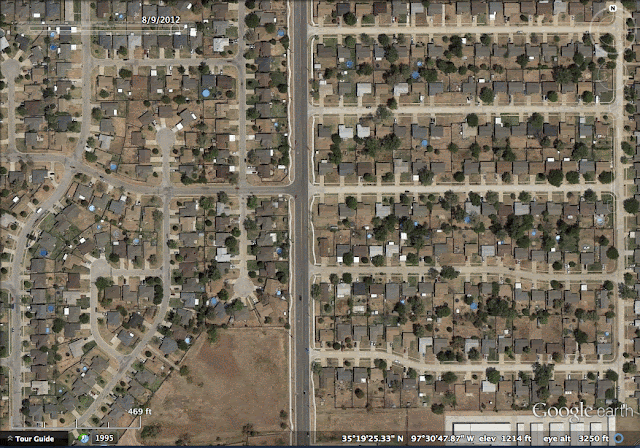The town of West, Texas (which is actually on the east side of Texas but not quite in "East Texas") was in the news on April 17th, 2013 after a massive explosion occurred in the town. The fertilizer plant that had been on fire most of the day exploded when the 540,000 pounds of ammonium nitrate inside the building ignited. Many buildings in the town suffered substantial damage as a result and the following investigations revealed a number of violations at the plant. It also registered as a 2.1 on the Richter scale which, you can see on a seismograph and check out at the USGS site.
The following gif shows a before image from October, 2012 and an after image from April 18, 2013 (one day after the blast):
You can find it yourself on Google Earth using these coords: 31°49'N 97°05'W
Check back in two weeks to head to Iran.









